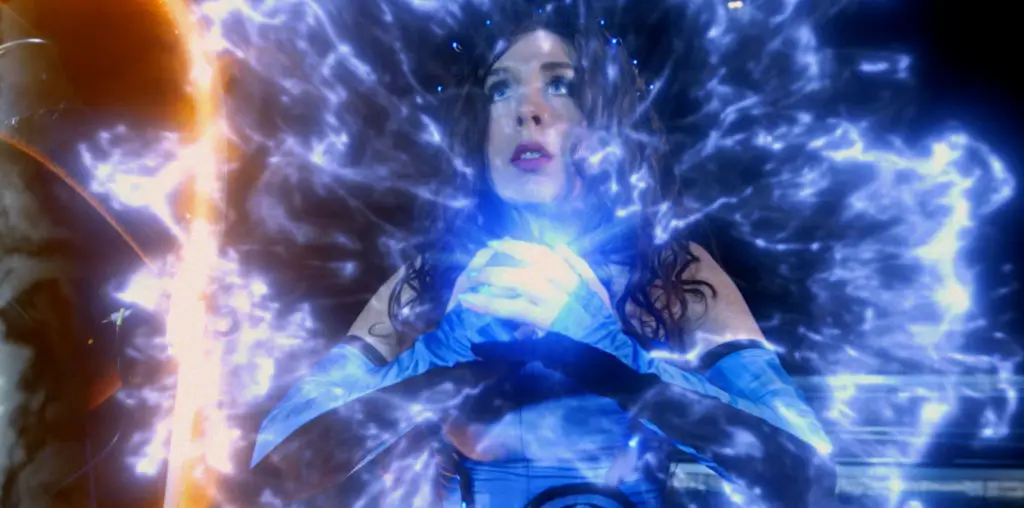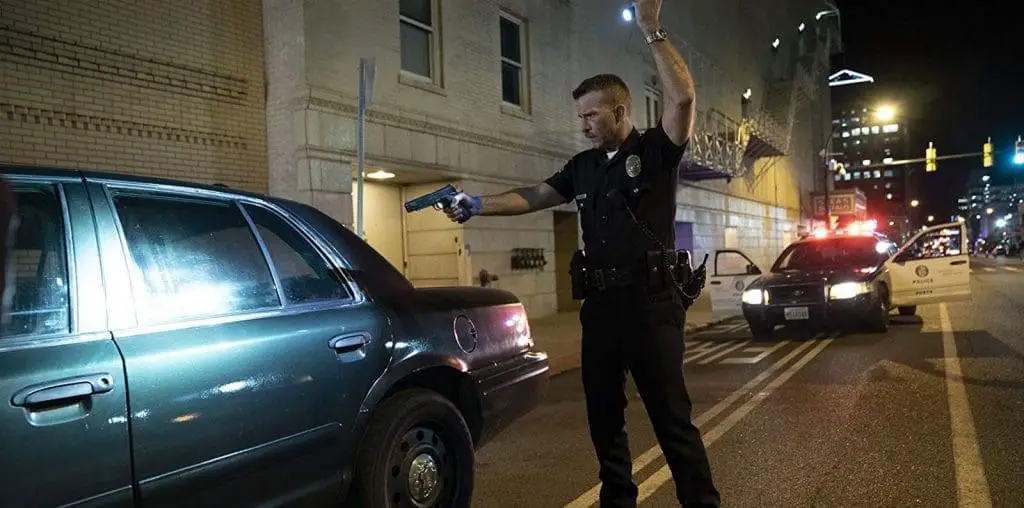
BOOTLEG FILES 200: “Johnny the Giant Killer” (1950 animated feature from France).
LAST SEEN: We cannot confirm the last public screening of this title.
AMERICAN HOME VIDEO: Only in bootlegged dupes.
REASON FOR DISAPPEARANCE: An orphan film.
CHANCES OF SEEING A DVD RELEASE: Only if it is restored and presented in the original French-language version.
Before I start this column, I would just like to point out this is the 200th entry in The Bootleg Files series. I’d like to thank everyone who has supported this column since it began four years ago, and I hope that the next 200 columns are equally entertaining.
This week, we’re going to take a look at the first animated feature to come out of France. Actually, we’ll be looking at the bastardized, truncated American version – I’ve never seen the original uncut French production. The film in question is known on this side of the Atlantic as “Johnny the Giant Killer,” and the weirdness of its contents is matched by its incredibly strange history.
“Johnny the Giant Killer” began its life as “Jeannot l’intrépide,” an ambitious project helmed by the Hungarian-born, Paris-based animator Jean Image. In postwar French cinema, animation was limited to a few short subjects. The French market, not unlike the other markets around the world, capitulated to Disney as the sole source of feature-length animated productions.
Image’s decision to create a feature film was daring, if only because he lacked the budget and manpower that Disney enjoyed. He also lacked the necessary post-production facilities: Image shot his film in Technicolor, but at the time the only European laboratory to process the Technicolor negative was located in London. Nonetheless, he pushed ahead and created “Jeannot l’intrépide” in a relatively speedy 18 months.
The film opens at a boy scouts’ campfire. Six brown-haired scouts, who all look alike, are joined by a red-haired boy who is dressed differently from them. The seventh boy is Johnny, who entertains the scouts by reading from a book about an ogre’s castle at the far end of the woods. The boys assume the castle must be near them, since their campfire is at the edge of a forest. For no clear reason except to push the film along, they decide to set out through the woods in search of the castle.
And what do they find? Yeah, it is the ogre’s castle. And he is a not a happy ogre – he’s a green-haired sadist with oddball machinery that shrinks animals and people. Once they are miniaturized, the ogre makes sandwiches of his two- and four-legged prisoners. The six scouts are locked in a cage by the ogre, and Johnny is shrunken to thumb-size. However, he manages to escape from the castle.
Johnny is now the height of an insect, which is convenient as he finds himself in an insect universe ruled by a queen bee. The monarch is smitten with Johnny, which could be a bit icky since (1) he is a minor and (2) an insect-human relationship based on physical attraction runs the risk of being classified as b********y. Nonetheless, Johnny receives a silver stinger that he uses as a sword.
The silver stinger comes in handy, since an evil bee who tries (and fails) to kill Johnny leaves the queen’s hive and returns with an army of nasty bees. There is a great commotion and Johnny swings his silver stinger with aplomb, neatly decapitating the invader bees. Johnny saves the day and is awarded with a medal, yet he is upset because his scout comrades are still locked up in the ogre’s castle.
However, the queen bee decides that Johnny’s bravery should be repaid. She organizes an insect army and the little buggers swarm the ogre’s castle. Johnny liberates his friends and the ogre, after being stung mercilessly by the insect army, gets shrunken and caged. Johnny is able to regain his normal size, and he bids the queen bee farewell while he and his scout buddies take the shrunken ogre back to civilization.
To its credit, Image’s film is rich with inventive visual comedy. The insect world is especially innovative, with buggy parallels to the human experience (centipedes doubling as commuter trains, hard-shelled beetles marching in military formation, a bee nursery where yellow jacket nurses care for infants in honeycomb-shaped cradles). And the film offers enough trippy imagery that will appeal to stoner and sober alike, especially the sight of Johnny and the queen bee’s wild airborne waltz.
To its detriment, though, the film’s low budget often hiccups inconveniently. Parts of the film (especially the scenes involving lookalike scouts and the ogre) look cheap and amateurish – and that is often in sharp contrast to other sequences where the animation is richly stylish (particularly when Johnny tries to grasp the dewdrops on a spider’s web). Perhaps Image had two different sets of animators working on the film, and the quality control between these teams was not strictly enforced.
But even with those flaws, “Jeannot l’intrépide” was well received by the French when it debuted in late 1950, and it won an award at the 1951 Venice Film Festival. But American distribution prospects were shaky. The film didn’t look anything like the Disney products that were ruling the theatrical channels and parts of the film were actually more than a little violent (particularly a scene where the ogre makes a sandwich of a shrunken lion and devours the beast in one gulp).
“Jeannot l’intrépide” wound up being acquired by Lippert Pictures, which was probably the worst possible distributor for this title. Lippert specialized in low-budget fare that could be packed into double features and dumped on undemanding Saturday matinee audiences. Lippert assigned someone named Charles Frank to create a new English-language screenplay, but Frank and his team didn’t appear to be paying much attention to his work. The resulting film, now called “Johnny the Giant Killer,” has some of the worst dubbing ever inflicted on a cinematic import – the characters are either given dialogue when no one is supposed to be speaking, or they use very odd verbiage (Johnny keeps calling the bee monarch “Queenie”).
Lippert also cut 22 minutes from Image’s 80-minute production. This was done to accommodate its part on a tight double feature and to edit out the more violent scenes, but it also created gaps of coherency. At one point, Johnny gets trapped in a spider’s web and is rescued by bees, yet in the Lippert version we only see him approaching the web while one of the bees later comments on the rescue.
Lippert also failed to correct one of Image’s main mistakes: no copyright was ever filed on either the French or American versions. Thus, “Johnny the Giant Killer” was immediately a public domain title. After Lippert went out of business in 1955, the bootlegging began.
“Johnny the Giant Killer” reappeared in the late 1950s on something called “The Capt’n Sailorbird Show.” It was a cheaply produced TV cartoon series, and Image’s film was chopped into five-minute segments shown in daily serial format. Considering this series was broadcast in black-and-white, all of the effort in making a Technicolor feature was lost in this presentation. Another serialized version turned up in the early 1960s on “Merrytoon Circus,” a kiddie TV show broadcast on New York’s WOR-TV. Years later, the New York punk quartet Gutbucket created a new (and completely inappropriate) score for the film and screened it during their concert gigs.
As for Jean Image, he went on to create six more animated features, including a 1973 remake of this film. However, he never achieved any degree of international recognition and his work is largely unknown outside of France.
Being a PD film, “Johnny the Giant Killer” has only been seen in crummy bootlegged dupes (most seem to come from well-worn 16mm prints). Some videos and DVDs have a replacement title to the original Lippert version that reads “Patnel Productions, Copyright 1984” (I have that on my $3.99 DVD copy). The original French-language version is not available in the United States.
If “Johnny the Giant Killer’ isn’t a great film, at least it’s a unique and unusual endeavor. Even in its badly chopped American edition, it deserves to be seen and appreciated. And hopefully in the near future, someone with deep pockets and a love for the bizarre will restore it to its original wacky state.
IMPORTANT NOTICE: The unauthorized duplication and distribution of copyright-protected material is not widely appreciated by the entertainment industry, and on occasion law enforcement personnel help boost their arrest quotas by collaring cheery cinephiles engaged in such activities. So if you are going to copy and sell bootleg videos, a word to the wise: don’t get caught. The purchase and ownership of bootleg videos, however, is perfectly legal and we think that’s just peachy! This column was brought to you by Phil Hall, a contributing editor at Film Threat and the man who knows where to get the good stuff…on video, that is.
Discuss The Bootleg Files in Back Talk>>>

